به گفته پیتر ملنار، سرعت و حضور دستگاه های تلفن همراه در همه جا، زمینه آزادی بیان را آنلاین تغییر داده است.

در گذشته محتوای نژادپرستانه و تحریکهای دیگر آنلاین، بعید بود که سبب خطر حتمی از خشونت شوند. توسعه سریع دسترسی به اینترنت در دستگاه های تلفن همراه این را تغییر داده است. کسانی که توسط ویروس تعصب آلوده شده اند، می توانند دنبال هدایت ایدئولوژیک گردند و یا حتی آموزش کاربری و عملی از وب سایتهایی که تحریک تنفر بر علیه گروه ها، اغلب با خصومت و یا به عنوان دشمنان تهدید شده در دفاع از حمله، مشاهده شوند.
من در زمینه تظاهرات LGBTQ در سال ۲۰۰۸ در بوداپست نوشتم:
تحریک به خشونت ابزاری در اینترنت، حتی اگر تا حدودی در دور دست و در پیش (با گسترش دستگاه های تلفن همراه، لزوماْ آن نخواهد بود) همراه با سخنان تنفرآمیز در تظاهرات، با سخت ترین آزمایش برای منع فقط بیان- به طور مستقیم و قاطعانه کمک به ایجاد آن می کند- باعث یک خطر واضح و حاضر می شوند. تحریک به خشونت در اینترنت، حتی اگر عملاْ مورد حمله قرار گرفته و ابزاری،ممکن است هنوز بیشتر مورد ضرب و شتم سخنان تنفرآمیز زنده در تظاهرات قرار گیرد.
۴ سال بعد، رشد تعداد کسانی که از طریق تلفنهای همراه به اینترنت، به سرعت در حال گسترش سریع مقیاس فضایی، وصل می شوند، دیده می شود. تحریک به خشونت دیگر لازم نیست «تا حدودی از راه دور و در پیش» ممکن است در محیط التهابی استادیوم فوتبال و یا یک میخانه، باشد.
در مورد تحریک در برابر تظاهرات LGBTQ در بوداپست در ۲۰۰۸، من استدلال کردم:
با توجه به شخصیتهای ابزاری اینگونه تحریک به خشم، باید به یاد داشت که وحشتناک ترین مثال از استفاده به طور مستقیم ابزاری از ابزارهای ارتباطی مدرن برای تولید خشونت، استفاده از رادیو هنگام قتل عام در رواندا، است. در کنار گسترش نفرت، صدا و سیمای ْهزاران تپه آزادْ، وسیله فراهم کردن اطلاعات عملی مستمر و به خوبی برای پیدا کردن قربانیان هدف قرار داده شد. پیشرفت دستگاه های تلفن های همراه زمینه «سخنان تنفر آمیز» را تغییر داده است. در اینترنت تحریک در مقابل گروه های مورد هدف- معمولاْ اقلیت که مورد تبعیض قرار می گیرند مانند مجارهایی که از نسل رمانیها هستند- می توانند به طور فزاینده بدست مردم برسد،همانگونه که رادیو این کار را مقید از محل یک کامپیوتر می کند.
آنچه در پی دارد یک بحث و جدل برای محدودیت گسترده ای از آزادی بیان از طریق اینترنت یا رادیو است. اینها آزادی تکنولوژی هایی هستند که قادر به ساختن گفتمان آزاد،قوی و به خصوص عمومی می باشند. همانطور که بحث کردم،ممنوعیت مبتنی بر محتوا در سخنرانی …مخصوصاْ در عصر اینترنت، مانند پریدن از روی یک سایه می باشد. منع قانونی باید محفوظ تحریکی که باعث خطر حتمی می شود، گردد… هنر و آموزش و پرورش در وسیعترین مفهوم، موثرترین جهت جلوگیری در برابر سخنان تنفر آمیزاست . آنها می توانند گفتمان عمومی را که به ریشه های تعصب نائل می شوند، درمان کنند: جهل، سوٰتفاهم و باورهای غلط. در عوض بی وقفه تکرار کردن مباحثه برای ممنوعیت های محتوای خاص در برابر «سخنان تنفر آمیز» در اینترنت با استدلال اینکه اینترنت گسترش سخنان تنفر آمیز را راحت تر می کند، (آنرا آسان تر برای برقراری ارتباط هر نوع محتوا، از جمله پاسخ به سخنان تنفر آمیز) من یک روش جایگزین پیشنهاد می کنم:
اجازه دهید به صورت پویا بر تغییر متن های فرآوری که چگونه سخنرانی نژادپرستانه و دیگر تحریکها در اینترنت می تواند باعث خطر حتمی شوند، متمرکز شویم. اجازه دهید به شرایطی که دستگاه های ارتباطی تلفن همراه می توانند به طور مستقیم تحریک را به نفرت آنلاین در نقاطی که خشونت در دنیای واقعی رخ می دهند، متمرکز شویم. در چنین محیطی، تحریک به نفرت در اینترنت می تواند خطر حتمی با ارتباط مستقیم ،اتفاقی بین تحریک آنلاینی و خطر واضح و حاضر، ایجاد کند. به نظر می رسد که دستگاه های تلفن همراه یک خط بین گفتاری که از حمایت قانون اساسی برخوردار هستند، می کشد، حتی اگر محتوای آن از نظر اخلاقی محکوم شود، و تحریکی که در زمینه ای که خطر حتمی بوجود می آورد لازم است، ممنوع شود.
پیتر ملنار همکار سردبیر و نویسنده فصل «محتوا و متن سخنان تنفرآمیز: تجدید نظر، مقررات و پاسخ» است.



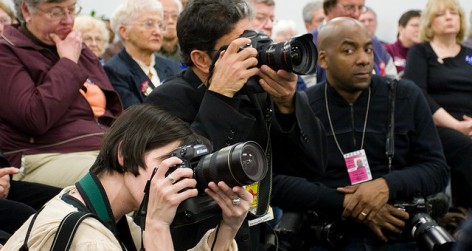



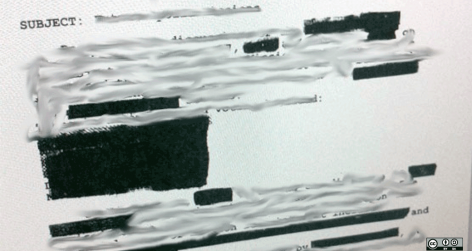
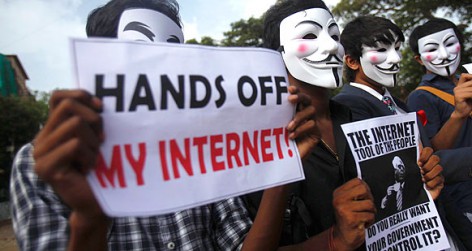



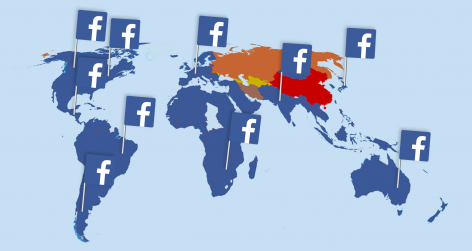

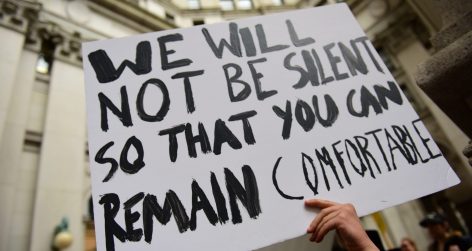








reply report Report comment
Response to ‘When an iPhone can be dangerous’ by Peter Molnar
We are two students who are currently looking into the language of Taboo and Hate Speech. When we stumbled across your article, When an iPhone can be dangerous we could not resist but to write a response.
The arguments in the text primarily focuses on the negative aspects of technology, while the positive factors are neglected. What about the use of the iPhone that is actually beneficial to us? To call the emergency number (112/911) when in trouble, instead of having to scream your lungs off; to donate money through simply one text message, supporting various charity organizations and being able to make the world a better and healthier place?
Technology is the effect, not the cause.
People even argue that gadgets such as the iPhone is making us more organized.
A calendar at our fingertips makes it easy to slip in appointments, reschedule or cancel and is able to notify you when you have an event scheduled. This makes it impossible for a lazy someone to ‘forget’ to do the dishes, vacuum or put dirty clothes in the damper. The iPhone simply answerers our request for bigger, faster and stronger.
Your statement about the communication in the Rwandan Genocide, is in fact not merely the radio that was the primary issue of the destructive event but rather the past history that was the main cause of it. The technology indeed supported the genocide in the way that communicating propaganda and messages became simpler but the radio was only a small factor. The colonization of the Belgians and the following death of the Rwandan president Juvenal Habyarimana, agitated its citizens and created a barrier between them. To be branded by one’s looks as an ‘either or’ object (Tutsi or Hutu) intensified the anger as time went on, especially since one side, the Tutsi, was seen as the ‘better’ by the Belgians.
Technology can evoke hatred, but it has also brought out an entire revolution, the Arab Spring. Social media, such as Twitter and Facebook, is the cause for this imminent and rapid change of events. Due to its simplicity and availability it is easy to bring thoughts and ideas to millions who might otherwise not be connected. Wael Ghonim chief and symbol of the revolution in Egypt states “This revolution started online. … We would post a video on Facebook that would be shared by 60,000 people on their walls within a few hours. I’ve always said that if you want to liberate a society just give them the Internet.”
You also state “In such environments, incitement to hatred on the internet can create imminent danger with a direct causal connection between online incitement and clear and present danger”. What is imminent danger, and how would one measure it in this context? The sentence seems rather vague and hyperbolic. Also throughout the article, you move quickly from one strong example to another, but barely provide any counter examples for support; it leaves the reader confused and with examples that are simply floating around.
Technology indeed has the capability to bring a person into danger, as well as being able to do the exact opposite. However, one ought not to forget that the use of the hand-held brain (the iPhone) has made our lives change into a whole other dimension.
From the students in the American School of the Hague
reply report Report comment
The Internet has become one of the largest sources of communication between people globally. Aside from the increasing communication, technology allows people to watch and receive global news at a faster speed and allows people to create websites and express their opinion freely on specific issues. Blogs and opinion articles have become increasingly popular and are easily accessible through technological devices such as smartphones and laptops. This exact platform can be used to excite hatred targeting a community, group of people or an issue.
Take, for example, a harmless Tumblr blog that belongs to a teenage fan of the popular band One Direction. She publishes posts expressing her hatred towards the girlfriend of one of the members of the band. The fan claims that the girlfriend is fake and a scheme to hide the band member’s homosexuality. The blog has over 100,000 followers, which lead to a cult of fans freely posting confessions and opinions about the relationship. The blog has earned a lot of fame, and with more confidence than when she started, the owner of the blog now bids her followers to send twitter threats to the girlfriend. This is a small example, but has a huge impact on all the parties involved and carries a powerful message of how people use technology to spread opinions that lead to “hate speech,” or speech that specifically targets a person or group on basis of race, religion and sexual orientation. Such sites should be taken down, because the hate is directed towards one person or group, and can hurt someone badly. However, one could argue that everyone has a right to express ones opinion, but using a public platform to blatantly direct hate towards someone is wrong.
Another popular characteristic that triggers hate speech is anonymity. As technology has developed, people now have the advantage of anonymously publishing posts. This gives them a sense of security to freely communicate and allow people to be involved with things like scandals for example. Anonymity has led to many new issues, one of the biggest being cyberbullying. Cyberbullying has become a phenomenon around the world and is becoming increasingly popular. Recently, a new site has emerged called Ask.fm, which was intentionally created to ask a specific person innocent questions anonymously. However, it quickly escalated to a vehicle that allows you to bash that specific person with hurtful statements rather than questions without that person knowing whom it is. An article in CNN claims that teenagers use apps such as Ask.Fm to change their identity and make cruel statements to other teens, and it has become a big source of cyberbullying. A recent case of a suicide by a teen due to hate from Ask.fm has sparked discussion about whether sites like these should be abolished. Sites, such as Ask.fm do hurt people, and people should not be allowed blatantly hate on someone using such means.
Despite the fact that technology has greatly benefitted the lives of many, and given the ability to freely post on the Internet, gives us a sense of freedom, however people have misused this facility. Instead the Internet has become one of the biggest and most accessible sources for hate crimes against communities or groups of people.
Ria and Marijne, ASH Grade 11, English IB SL Yr-1
reply report Report comment
Unfortunately the greatest danger inherent to ubiquitous technology is not found in the user or their actions.
It is the tool itself and the perceptions of the abilities of that tool that are the real dangers.
While surfing the web on an iPhone you would be forgiven for believing that you are granted unfettered access to all areas. In reality what you are permitted to view is a carefully filtered selection of results relative to your location, political situation or any other relevant factor.
The naive belief that a Google search result is based solely on the search criteria is again understandable as our perception of the tool would imply this logic. However many would be disturbed to discover that their queries were actually producing results relative to the user’s profile and history instead of relevant search criteria.
This enables organisations such as Google and Apple to effectively control free expression of thought by diverting users to more profitable or preferable services such as YouTube or iTunes, all without the knowledge or consent of their users.
PROOF – search the same Google query from both yours and a friends computer whilst logged in and logged out, observe the differences.